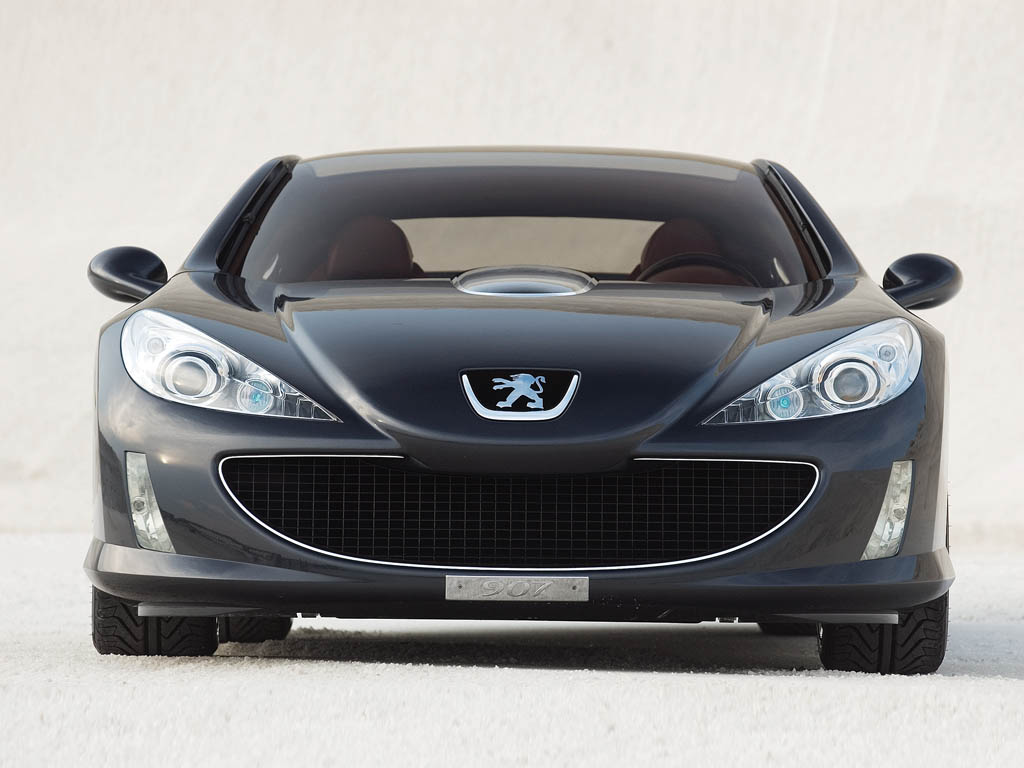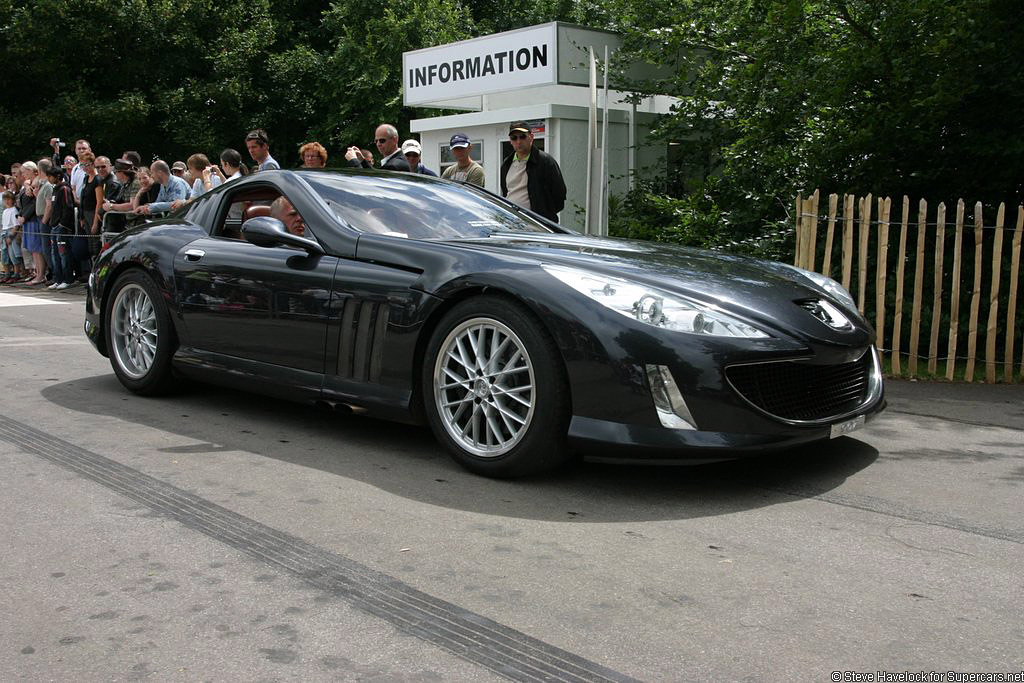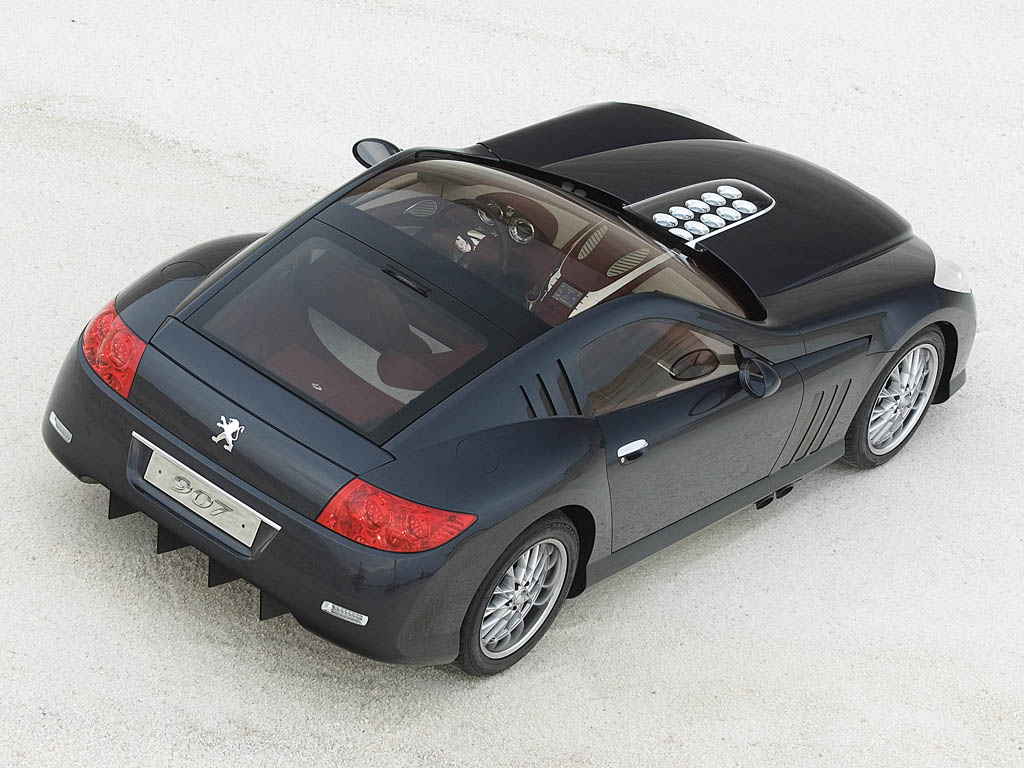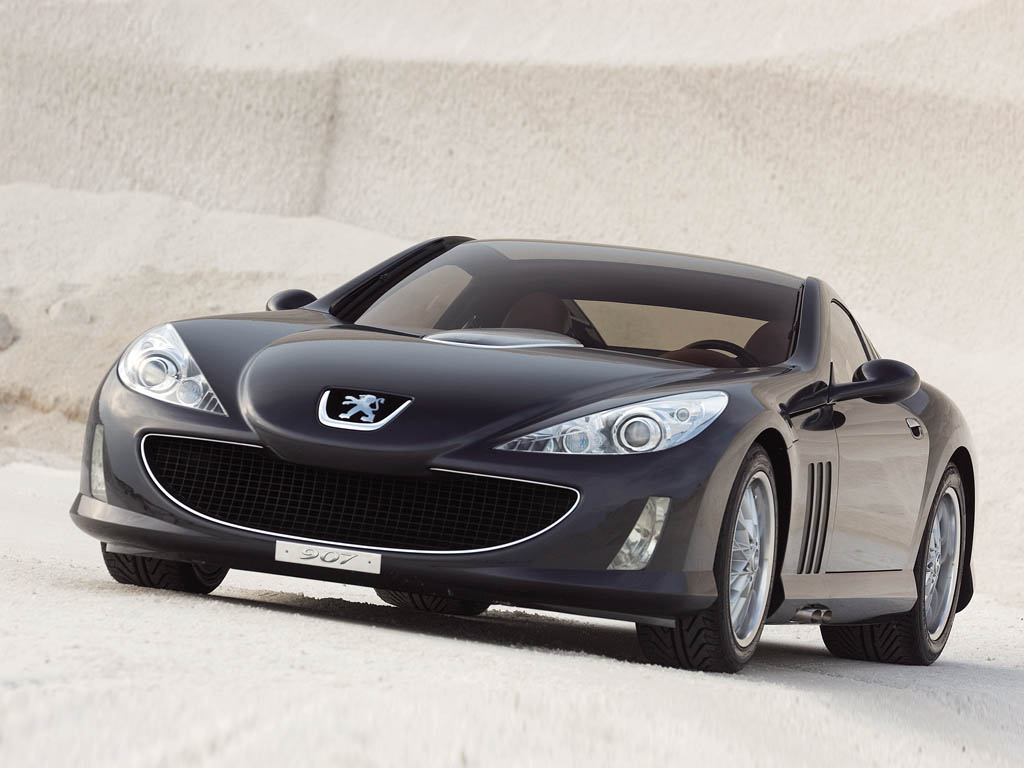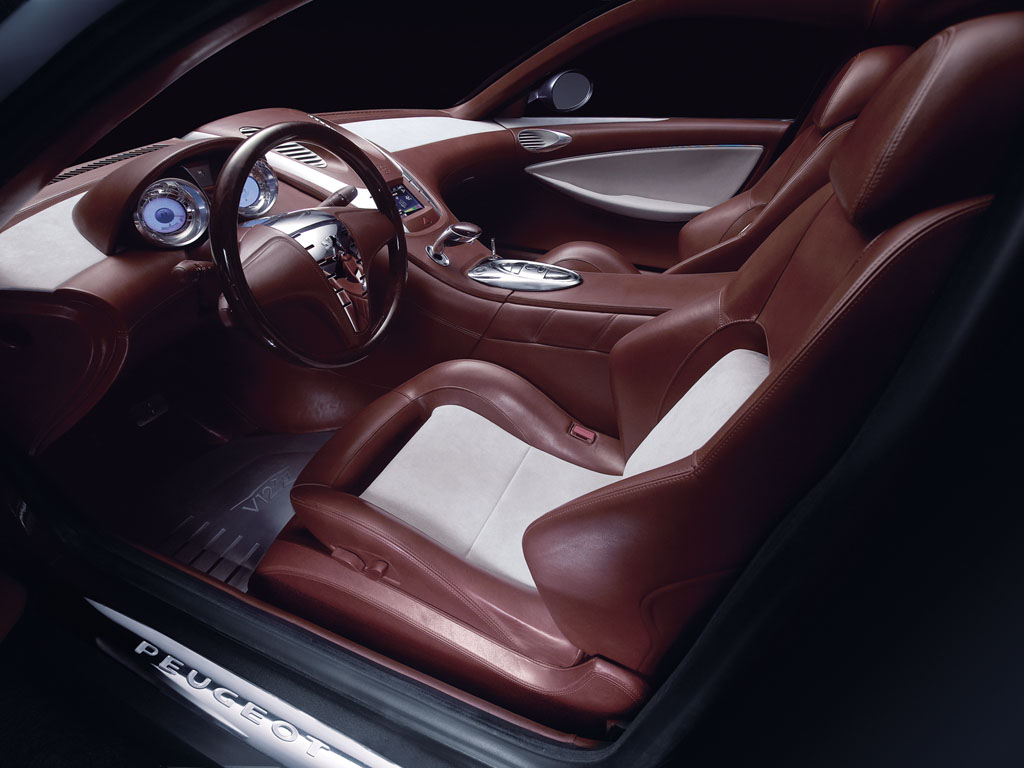2004 Peugeot 907 Concept
The 907: Timeless.
At the 2004 Paris Motor Show, Peugeot presents its vision of an exceptional vehicle intended to rise above the marque’s values. The 907 is powered by a 6.0 litre V12 engine, developing power near 500 bhp and features a sequentially controlled 6-speed manual gearbox. The interior calls to mind the world of touring cars with materials of genuine class: leather and alcantara for the passenger compartment, wood for the steering wheel and gear lever. With the 907, stylists have reverted to the traditional features of car design and, with the help of new technology, have created a fresh interpretation of a classic Peugeot.
Passionate About Pleasure
Dreams create desire that fade or disappear as dawn breaks. Sometimes, they leave a strong impression but often, only a memory remains of the dream, nestled deep in sub-conscious. Stylists, engineers and designers turn their dreams into reality; they express their dreams through design. At Peugeot, this group enthusiastically swap ideas, discuss concepts to agree on the particular ideas. The 907 is the result of creative freedom; It is a GT coupe, created with reference to the past, and will influence the future.
The 907
The 907 is a two-seater coupe and a modern classic. Reminiscent of the great French coachbuilding, the 907 fuses a large capacity engine together with a flowing shape. It is a conjunction of advanced technology and motoring tradition.
The 6.0 litre V12 engine (368 kW or 500 bhp) is positioned longitudinally behind the front axle; connected by a small propshaft, it transmits a power to a six-speed gearbox placed longitudinally in front of the rear axle. Keeping both the major power train elements within the axles, helps the 907 to keep its heavy masses near the center of the car.
The chassis structure consists principally of a carbon fibre shell, to which the mechanical components, for example, the four double wishbone suspension units, are attached. Set into the bonnet, a glazed panel reveals twelve intake trumpets reminiscent of an Italian thoroughbred.
The roof and front windscreen form a single glazed area in harmony with the rear windscreen. Side vents are situated in the front wings and rear quarter panels, adjacent to the glazed roof, while a retractable rear spoiler is incorporated in the tailgate. Two exhaust pipes emerge from either side of the car, which is equipped with 18 inch wheels and Michelin tyres, 275/40 at the front and 345/35 at the rear.
Inside, brown leather and light grey alcantara trim is used to cover both the interior and the seats. The steering wheel and the gear lever knob have authentic wood inlays. The instrument panel, although digital, is displayed in analogue style and the touch screen of the central console is connected to an onboard PC.
Story by Automobiles Peugeot, edited by Supercars.net
In Detail
| submitted by | Richard Owen |
| engine | V12 |
| position | Mid-Front, Longitudinal |
| displacement | 6000 cc / 366.1 in³ |
| power | 372.9 kw / 500.1 bhp |
| specific output | 83.35 bhp per litre |
| bhp/weight | 357.21 bhp per tonne |
| body / frame | Carbon Fibre Monocoque |
| driven wheels | RWD |
| front tires | Michelin 275/40-18 |
| rear tires | Michelin 345/35-18 |
| f brake size | mm / in |
| r brake size | mm / in |
| f suspension | Double Wishbones |
| r suspension | Double Wishbones |
| curb weight | 1400 kg / 3086 lbs |
| wheelbase | 2500 mm / 98.4 in |
| length | 4370 mm / 172.0 in |
| width | 1880 mm / 74.0 in |
| height | 1210 mm / 47.6 in |
| transmission | Rear Mounted 6-Speed |
| gear ratios | :1 |







